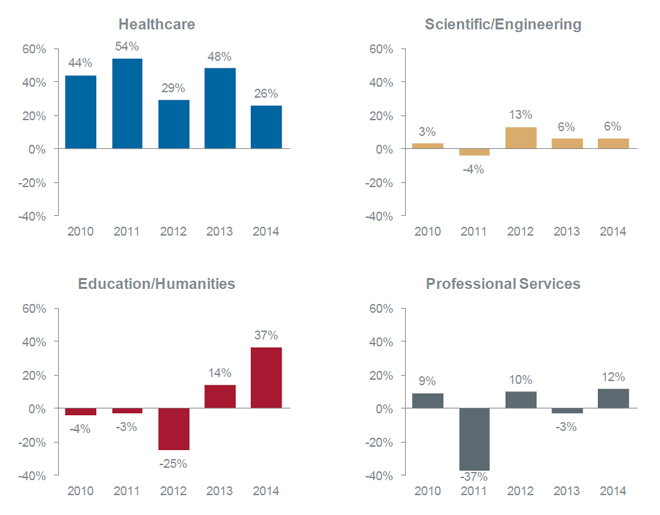
The Outsize Effects of Environmental Conditions on Membership
Membership is tough work, and success often hinges on which way the wind blows in your industry. But associations can work to improve the weather.
You don’t have to own a yacht (or a physics degree) to know one simple law of seafaring: You can’t sail a sailboat directly into the wind.
Association professionals and anyone else running just about any kind of business could tell you the same after struggling through the recession and half a decade of economic doldrums.
As my colleauges Katie Bascuas and Mark Athitakis reported a few weeks ago, McKinley Advisors’ “2014 Economic Impact on Associations Study: Capitalizing on Stability” report showed that association executives in 2014 are, however, increasingly optimistic as the economy slowly recovers. Or, perhaps, they’ve simply grown more accustomed to a slow economy.
While both sailors and associations are at the behest of the prevailing winds, sailors can’t control the weather; associations, in a way, can.
In any case, the report also breaks down membership trends across associations overall and in specific sectors, such as healthcare, science, and education. One key set of data illustrates just how much economic forces affect associations in varying ways across different industries.
Below is the “annualized five-year membership trend analyzed by field” from 2010 to 2014. Each percentage figure represents the difference between the percentage of associations reporting an overall membership increase over the preceding five years and the percentage reporting a decrease over the same five years. For example, positive 10 percent means a split of 55 percent reporting membership growth and 45 percent reporting a membership decline. In short, the bigger the positive number, the more associations that fared well that year in that field.
Source: “Capitalizing on Stability,” McKinley Advisors, 2014
You can easily see that times are relatively good for healthcare associations, while other sectors are mixed, and the ups and downs don’t follow a consistent pattern between sectors. If you’re an association membership professional, it appears to matter a lot what industry you’re in. There is a great opportunity to be seized in healthcare, while you have you work cut out for you in the professional services sector.
This points to a sobering possibility: that our recruitment, retention, and engagement tactics, as useful and well advised as they may be, can only serve to improve performance at the margins. Often when I see reports of an association with a double-digit growth rate, it turns out to be a young association in either a new, emerging industry (see here, here, and here) or an established industry undergoing significant expansion or transformation (see here). It’s much rarer, however, at an established association in a stable industry.
And yet, this is not an excuse for inaction. While the environment an association operates in will strongly dictate its potential, every association has the power to influence that environment by fighting for its industry. Through advocacy, public relations, workforce development, and any benefits that make its members more successful, an association can improve the health of its potential market. When there’s more demand for what your members do, or when your members are making more money, or when there are simply more potential members in your market, your membership outlook becomes a lot rosier. As the saying goes, a rising tide lifts all boats (including yours).
So, the truth is that associations have an advantage over sailors. While both are at the behest of the prevailing winds, sailors can’t control the weather; associations, in a way, can. If you’re working to strengthen your industry or profession, you can shift the winds in your favor, and your membership work could get a whole lot smoother.
How is your association working to improve its environment? Have you experienced membership work in both a headwind and a tailwind? If so, how did they compare? Please share your thoughts below.
(iStock/Thinkstock)







Comments